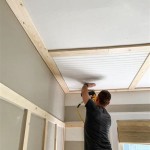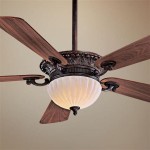Yellow Water Leaking From Ceiling: Causes, Concerns, and Remediation
The discovery of yellow water leaking from a ceiling is a cause for concern for any property owner. It indicates a problem within the building's infrastructure that requires prompt investigation and resolution. This article provides a comprehensive overview of the potential causes of yellow water leaks, the associated health and structural concerns, and the necessary steps for remediation.
Identifying the Source and Nature of the Leak
Before addressing the problem, it is crucial to pinpoint the source and, if possible, the nature of the leaking fluid. The yellow discoloration is a primary indicator that the water is not simply clean rainwater or condensation. The color suggests the presence of contaminants that have leached into the water supply. This process necessitates a careful examination of the area above the leak and potential plumbing or structural components that could be contributing to the problem.
Initial steps involve inspecting the attic, the floor above the leaking ceiling, and any walls adjacent to the affected area. Look for visible signs of water damage, such as stains, mold growth, or warped building materials. A visual inspection of plumbing fixtures, including pipes, toilets, and sinks, can also help identify potential sources of leaks. If the leak appears to be originating from a bathroom, the problem could stem from a faulty wax ring on the toilet, a leaky shower pan, or damaged plumbing lines. Similarly, if the leak occurs near a kitchen, appliance plumbing or drain lines should be investigated.
It is vital to determine the nature of the leaking fluid. Is it simply discolored water, or does it have an oily consistency or a noticeable odor? An oily consistency might indicate a leak from heating or cooling systems containing refrigerants or other fluids. A foul odor might suggest sewage contamination, which presents a significant health hazard. If sewage contamination is suspected, it is imperative to avoid direct contact with the leaking fluid and to engage professional remediation services immediately.
Common Causes of Yellow Water Leaks
The range of potential causes for yellow water leaking from a ceiling is extensive. These causes can be broadly categorized into plumbing issues, roof problems, HVAC system malfunctions, and external environmental factors.
Plumbing Problems: Leaks in plumbing pipes are among the most frequent contributors. Over time, pipes can corrode, develop cracks, or experience joint failures. The water flowing through these pipes can pick up rust and other contaminants, resulting in a yellow or brown coloration. Leaking drain lines from sinks, toilets, and showers can also contribute to the problem, potentially carrying sewage or sediment that discolors the water. In older homes with galvanized steel pipes, corrosion is a common issue that can lead to discoloration and leaks.
Roof Issues: Roof leaks are another significant cause. Rainwater can penetrate damaged roofing materials, such as missing shingles, cracked tiles, or deteriorated flashing. As the water travels through the attic or ceiling space, it can pick up contaminants from insulation, dust, or decaying organic matter, resulting in a yellow or brown discoloration. Additionally, inadequate ventilation in the attic can lead to moisture buildup and condensation, which can further exacerbate the problem.
HVAC System Malfunctions: Heating, ventilation, and air conditioning (HVAC) systems often contain water lines or condensation drainage systems. If these systems develop leaks, the water can seep into the ceiling and cause damage. In some cases, the leaking water may be contaminated with rust, mold, or other debris from the HVAC system, resulting in a yellow discoloration. Condensation lines that are clogged or improperly installed can also contribute to the problem.
External Environmental Factors: External factors can also contribute to water leaks. Heavy rainfall, snow accumulation, or ice dams can overwhelm the roof's drainage system, leading to water intrusion. Additionally, improper landscaping can direct water toward the foundation of the building, potentially leading to water seepage into the walls and ceiling. Poorly maintained gutters and downspouts can also contribute to water buildup and leaks.
Health and Structural Concerns
The presence of yellow water leaking from a ceiling poses a range of health and structural concerns that must be addressed promptly. Ignoring the problem can lead to long-term damage and potentially hazardous conditions.
Mold Growth: One of the most significant concerns is the potential for mold growth. Mold thrives in moist environments, and a water leak provides the ideal conditions for its proliferation. Mold can cause a variety of health problems, including allergies, respiratory issues, and infections. Some types of mold, such as Stachybotrys chartarum (black mold), can produce toxins that are particularly harmful. The presence of mold can also damage building materials, such as drywall, wood, and insulation, requiring costly repairs.
Structural Damage: Water leaks can cause significant structural damage to the building. Water can weaken wooden beams, joists, and framing, potentially compromising the structural integrity of the ceiling and walls. Over time, this can lead to sagging ceilings, warped walls, and even collapse in severe cases. Water can also corrode metal components, such as pipes and wiring, further exacerbating the damage.
Electrical Hazards: Water leaks can pose a significant electrical hazard. Water can conduct electricity, increasing the risk of electrocution if it comes into contact with electrical wiring or outlets. This is particularly dangerous in areas where wiring is exposed or not properly insulated. It is crucial to turn off the power to the affected area immediately and to engage a qualified electrician to inspect the wiring and ensure it is safe.
Health Risks from Contaminated Water: Discolored water may contain harmful contaminants, such as bacteria, viruses, and chemicals. Exposure to contaminated water can lead to gastrointestinal illnesses, skin infections, and other health problems. If the water is suspected of containing sewage, it is imperative to avoid direct contact and to seek medical attention if necessary.
Remediation and Prevention
Effective remediation of a yellow water leak involves addressing the source of the leak, repairing any damage, and implementing measures to prevent future occurrences. This process often requires a combination of professional services and homeowner maintenance tasks.
Source Identification and Repair: The first step is to identify and repair the source of the leak. This may involve hiring a plumber to repair leaking pipes or fixtures, a roofer to fix roof damage, or an HVAC technician to address HVAC system malfunctions. It is crucial to ensure that the repair is performed correctly to prevent recurrence of the problem.
Water Damage Restoration: Once the source of the leak has been repaired, it is important to address any water damage. This may involve removing wet or damaged building materials, such as drywall, insulation, and flooring. The affected area should be thoroughly dried and disinfected to prevent mold growth. Professional water damage restoration services can provide specialized equipment and expertise to ensure that the area is properly dried and sanitized.
Mold Remediation: If mold growth is present, it is essential to remediate it properly. This may involve cleaning the affected area with antifungal solutions, removing and replacing mold-infested materials, and sealing the area to prevent future mold growth. In cases of extensive mold growth, it is recommended to engage a professional mold remediation company to ensure that the mold is removed safely and effectively.
Preventive Measures: To prevent future water leaks, it is important to implement several preventive measures. Regular inspections of the roof, plumbing, and HVAC systems can help identify potential problems before they escalate. Maintaining gutters and downspouts, ensuring proper attic ventilation, and addressing any landscaping issues that could contribute to water intrusion are also essential steps. Installing water leak detectors can provide an early warning of leaks, allowing for prompt action to minimize damage. Furthermore, homeowners should be aware of the age and condition of their plumbing and roofing systems, and consider replacing them proactively as needed to avoid costly repairs.

Water Leaking From Ceiling Causes Fixes And Prevention

What To Do When You Spot Ceiling Leaks Service Provider

7 Early Warning Signs Of A Ceiling Leak Same Day Trades Plumbing Electrical

Leaking Yellow Liquid From Ceiling Of Embassy Suites By Hilton Boston Marlborough Tripadvisor

Water Spot On Ceiling After Heavy Rain Here S What To Do

Water Stain On The Ceiling That S A Serious Plumbing Problem Reliance Sewer Drainage Inc

Water Damage In Your Ceiling Isn T Always Easy To Spot Servpro

Is Water Leaking Through Ceiling After You Shower Robinson Plumbing

Roof How Do I Find The Source Of Water Leaking Through Ceiling Home Improvement Stack Exchange

Water Stain On Ceiling What It Means To Do Next








